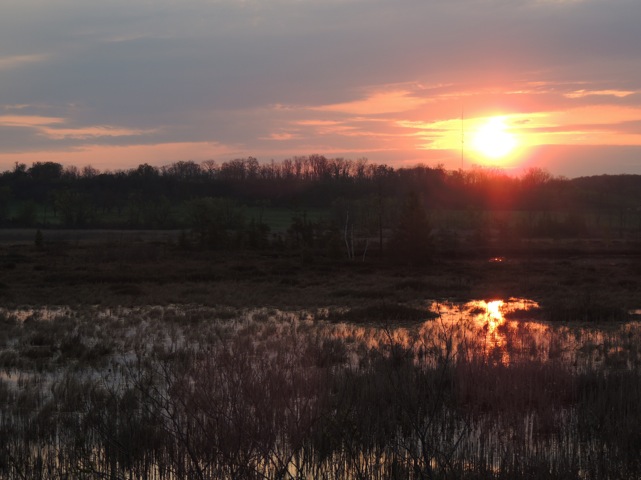
Yes, it’s Baillie Birdathon time again and the Ruthven Ringers are ready and raring to go!! The team is made up of Matt Timpf, Ben Oldfield and Liz Vanderwoude. As most of you know the birdathon is all about raising money to support bird research. Participants generate money by seeing as many species they can in a 24-hour period. Sponsors support their efforts by giving an amount per species counted or just a straight amount. Remember: 75% of all proceeds aimed at the Ruthven Ringers goes to support the banding station; the other 25% goes to support research projects picked by BSC (like the Canadian Snow Bunting Network). So please consider donating to this worthy cause. Me? I like giving money per species…..makes them work harder. And they will have to really push to surpass the 138 species total the Three Amigos Big Day effort generated last weekend.
The Ruthven Ringers BSC donation page: http://birdscanada.kintera.org/birdathon/theruthvenringers

The Three Amigos is made up of 3 Ross Thompson Award winners: Caleb Scholtens, Ezra and Giovanni Campanelli – 3 young guns as it were…..From the report below it looks like they had quite a day although Ezra could have fared better I guess:
We recorded 138 species on our big day, or at least that’s the number we’ve counted on our lists. The best was probably a female Cerulean Warbler with a flock/bouquet of warblers at Edgelake Park which Giovanni found and I identified.
Monday happened to be Ezra’s birthday and overall he had a good day. The worst part for him however was that we saw an American Bittern very well and he couldn’t obtain a photo of it that he liked. (he got one that I like – it flushed and he got a decent flight shot) Maybe he’ll send it to you…
Ezra’s difficulties notwithstanding, there is no question that they have set the bar for the Ruthven Ringers to surpass.
Ezra’s Photo Gallery:










Today’s Results:
Interesting migrants continue to trickle through in small numbers: Gray-cheeked Thrush, Northern Parula, Mourning Warbler (first for the year), Canada Warbler.

Banded 31:
1 Yellow-bellied Flycatcher
1 Traill’s Flycatcher
1 House Wren
1 Gray-cheeked Thrush
6 Gray Catbirds
2 Warbling Vireos
1 Philadelphia Vireo
1 Tennessee Warbler
1 Northern Parula
4 Yellow Warblers
1 Chestnut-Sided Warbler
2 Magnolia Warblers
1 American Redstart
1 Mourning Warbler
1 Common Yellowthroat
1 Canada Warbler
2 Indigo Buntings
1 Song Sparrow
1 Eastern White-crowned Sparrow
ET’s: 67 spp.




Rick
